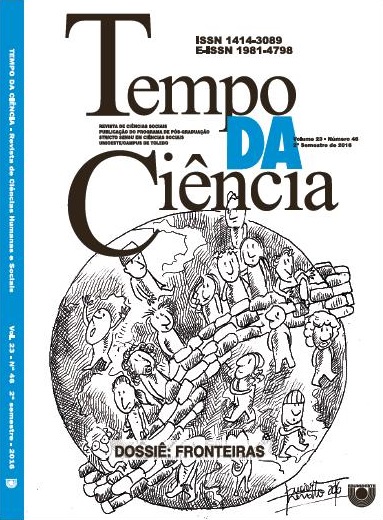Violent deaths and control policies in Triple Border
DOI:
https://doi.org/10.48075/rtc.v23i46.16128Keywords:
Mortes violentas, políticas de controle, Tríplice Fronteira, Estudo comparativo.Abstract
This article aims to discuss the variation in violent death rates and control policies at the Triple Border. The study provides a comparison between the three sides border. On the Brazilian side were implemented three control policies with different profiles, from the 1990s: two are development policies and police operations. The first policy was the project "Beira-Rio" which promoted the removal of slums that were in the Paraná river ravines. One consequence of this policy was the increase in mortality rates in Foz do Iguaçu, specifically between the years 1998-2006. The second policy adopted on the Brazilian side was the intensification of security forces to curb the "Sacoleiro circuit". The immediate result of this policy was the development of a series of changes in the illicit practices that have spread to the entire region. As result, Foz do Iguaçu mortality rates fell from 2006, but spread to neighboring municipalities. The third control policy is under development and it is the "Beira Foz" project, which won support from Itaipu Binacional and the state and federal governments. On the Argentine side and on the Paraguayan side, development policies did not influence the behavior of lethality on their respective sides.Downloads
Published
How to Cite
Issue
Section
License
Aviso de Direito Autoral Creative Commons
Política para Periódicos de Acesso Livre
Autores que publicam nesta revista concordam com os seguintes termos:
1. Autores mantém os direitos autorais e concedem à revista o direito de primeira publicação, com o trabalho simultaneamente licenciado sob a Licença Creative Commons Attribution que permite o compartilhamento do trabalho com reconhecimento da autoria e publicação inicial nesta revista.
2. Autores têm autorização para assumir contratos adicionais separadamente, para distribuição não-exclusiva da versão do trabalho publicada nesta revista (ex.: publicar em repositório institucional ou como capítulo de livro), com reconhecimento de autoria e publicação inicial nesta revista.
3. Autores têm permissão e são estimulados a publicar e distribuir seu trabalho online (ex.: em repositórios institucionais ou na sua página pessoal) a qualquer ponto antes ou durante o processo editorial, já que isso pode gerar alterações produtivas, bem como aumentar o impacto e a citação do trabalho publicado (Veja O Efeito do Acesso Livre).
Licença Creative Commons
Esta obra está licenciada com uma Licença Creative Commons Atribuição-NãoComercial-CompartilhaIgual 4.0 Internacional, o que permite compartilhar, copiar, distribuir, exibir, reproduzir, a totalidade ou partes desde que não tenha objetivo comercial e sejam citados os autores e a fonte.

